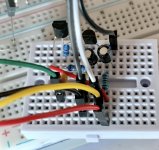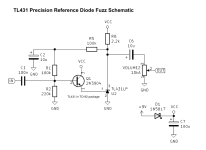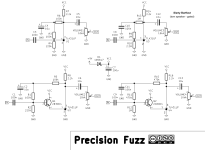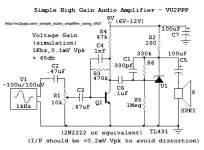Cybercow
Well-known member
One of my web friends/techs/peers introduced me to the TL431 Precision Reference diode as a "fuzz" device a few weeks ago. I had stuff on my bench, but finally got around to breadboarding one of the five 'fuzz' schematics I found for the device at Freestompboxes:
TL431 Precision Fuzzes
I ordered a half-dozen of the TL431 (in the TO-92 package) reference diodes from Tayda (they're cheap enough) to try them out.
I just threw it together on the breadboard as per the attached schematic. Holy wah! It sounds just like a torn speaker - with gating. It’s not overly loud, but definitely loud enough to stand out in a live scenario. Not my cup-o-tea, but certainly a popular effect. It will definitely f**k with your mind while playing - not know when to palm mute or let it ring. And it may require one to alter 'how to play' to get some consistency.
I’m goona audit the other TL431 Precision Fuzz variants and audit them as well. If they each possess a distinction, I may do all of them up in a “Slarty Bartfast” pedal series. I found five different schematics for a TL431 fuzz - and I’ll likely play with different support component values.
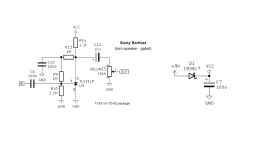
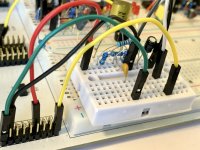
TL431 Precision Fuzzes
I ordered a half-dozen of the TL431 (in the TO-92 package) reference diodes from Tayda (they're cheap enough) to try them out.
I just threw it together on the breadboard as per the attached schematic. Holy wah! It sounds just like a torn speaker - with gating. It’s not overly loud, but definitely loud enough to stand out in a live scenario. Not my cup-o-tea, but certainly a popular effect. It will definitely f**k with your mind while playing - not know when to palm mute or let it ring. And it may require one to alter 'how to play' to get some consistency.
I’m goona audit the other TL431 Precision Fuzz variants and audit them as well. If they each possess a distinction, I may do all of them up in a “Slarty Bartfast” pedal series. I found five different schematics for a TL431 fuzz - and I’ll likely play with different support component values.


Last edited:


